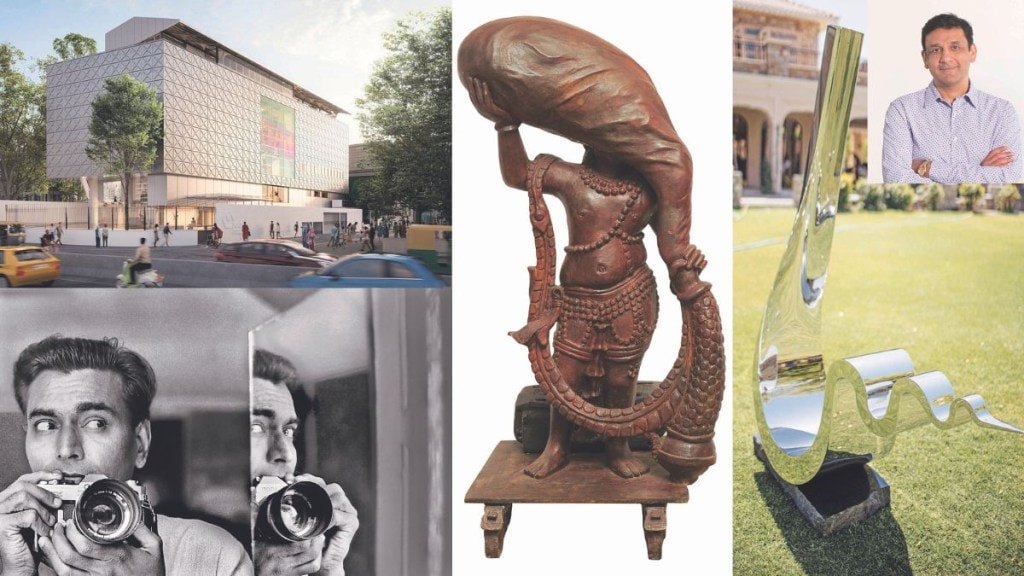Museum of Art & Photography (MAP), a private museum located in Bengaluru, opened its door to the public this month. Its founder and trustee Abhishek Poddar tells Vaishali Dar how the new space for ideas, storytelling, dialogue and cultural exchange will help build a museum-going culture.
Is MAP going to democratise art and change the whole museum-going experience?
Yes, we are aiming to inspire a change in the public’s relationship with art by democratising it and making it enjoyable and relevant for everyone. We hope to change the way people experience museums as engaging spaces that will help build a museum-going culture. Art has always been a way of life in India, but that connection seems to have snapped somewhere along the way and we hope to re-establish that again. We seek to inspire people to interact with art in ways that encourage humanity, empathy, and a deeper understanding of the world we live in. People must recognise the importance of engaging with our art and heritage, and for them to feel comfortable enough to interact with art in museums.
How has your collaboration with tech giants Accenture and Microsoft been? Is there any new tech experience to watch out for in 2023?
The collaboration has been very successful, and this is just the beginning. Until now, MF Husain’s persona was available on our website for audiences to interact with but now we will see the real impact of this AI-powered persona when visitors can interact with the late artist in real time. We have invested in technology significantly, be it photogrammetry, holography, interactive projections, and touch screens, sensor based digital art views, and AI enabled art and pattern searches. All this will inspire and delight visitors bringing the displays and exhibitions to life.
Will MAP take art beyond technology?
Prior to our physical opening, in 2020, we opened as a digital museum, in the midst of the pandemic, as all conversations and possibilities only existed in the virtual space then. We decided that since people could not come to MAP, we would take MAP to them. And now, we are looking forward to opening our doors to the public. There is something extremely powerful about a physical space and together with the virtual museum it would complete and complement the composite MAP experience. Going forward, we want to harness the power of the digital to reach out to audiences all over the world and introduce them to Indian art and culture. India is a recognised world leader in IT, and yet, this is not currently reflected in many of the nation’s museums.
Tell us about the design and structure of the museum.
MAP hopes to be a cultural anchor in Bengaluru for both city dwellers and visitors. The architectural firm, Mathew & Ghosh, balances the building’s transparency for public use with opacity for protecting the art. The structure creates column-free spaces for galleries, and this is worked out as a box with traditional columns and cantilever slabs at each level. The opaque enclosure for the main galleries serves to protect the artworks from exposure to ultraviolet lights while ensuring temperature and humidity control. On the other hand, visual transparency created within the museum’s common public areas helps avoid museum fatigue. The external opacity of the galleries was created with embossed stainless-steel panels (traditionally associated with post-industrial, metal panel water tanks), which stands as a metaphorical reference to the preciousness of art and its capacity to inspire society and culture to reflect and evolve. The stainless-steel facade, embossed with industrially pressed matt finished panels, also alludes to Bangalore’s colonial history. For MAP, the issue of accessibility is very important and so the physical space is especially designed to be exceptional in terms of access and inclusivity.
Is the museum categorised into segments?
The collection is divided into six key categories: Modern & Contemporary, Photography, Living Traditions, Popular Culture, Textiles, Craft & Design and Pre-Modern Art. However, within the museum there is no segregation of categories or segments of the collection. This is because we want to move away from categorising art in a definitive manner. We want to showcase the interconnectedness of different art forms and genres, and how each category of our collection interacts with the other.
How is the physical museum an inclusive one and accessible space for all?
The museum is designed with mobility in mind to make it accessible for audiences with diverse needs. For instance, we have developed audio guides and tactile artworks for a holistic experience of our exhibitions.
There are different areas that appeal to different age groups.For example, our technology gallery and learning centre are curated to make art interesting and fun for children, making the museum a suitable choice for families to spend their weekends. We want audiences from all walks of life to build a connection with art and to have their own dialogue with the artefacts housed in the museum.







